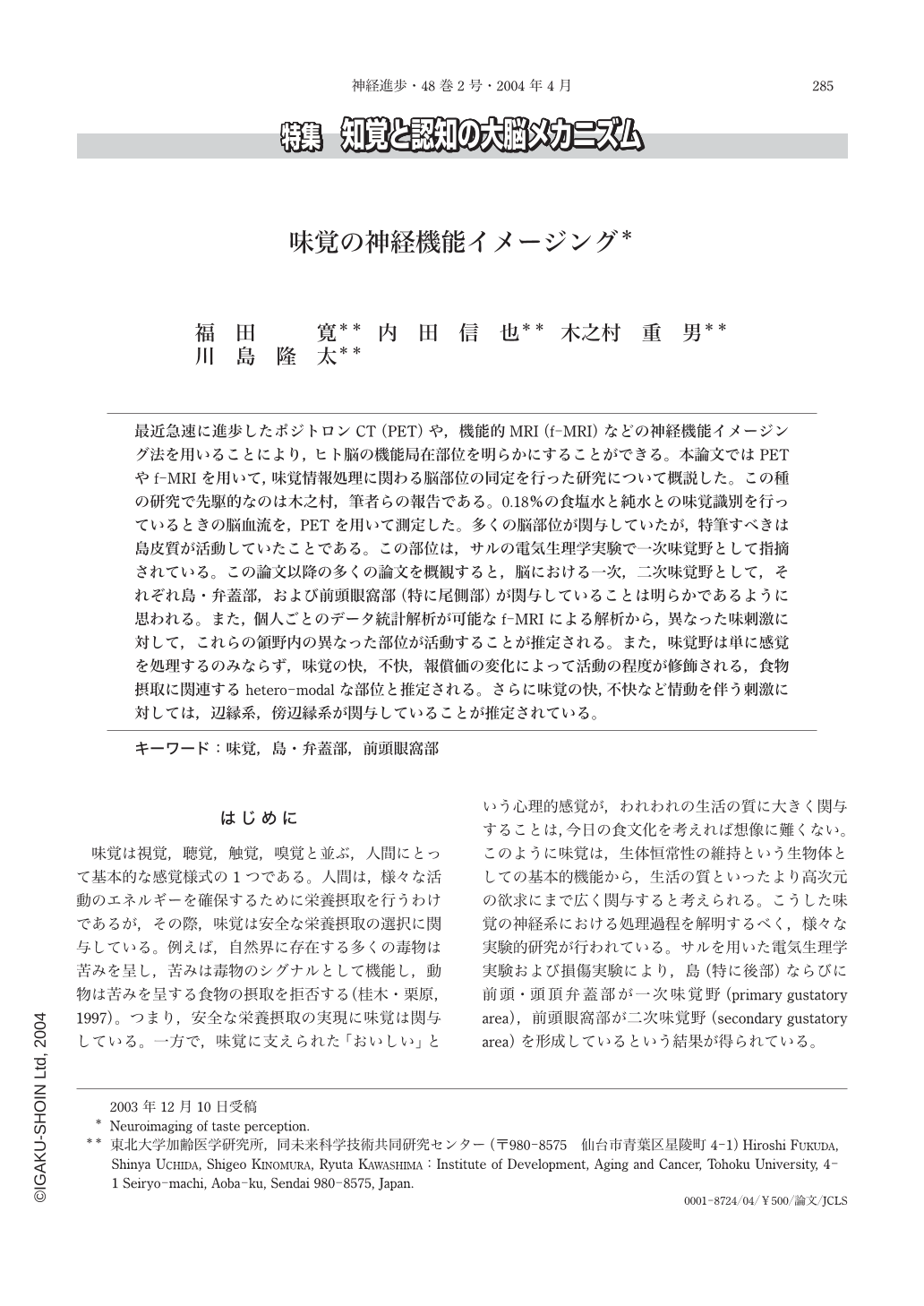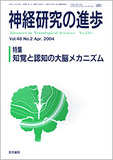Japanese
English
- 有料閲覧
- Abstract 文献概要
- 1ページ目 Look Inside
最近急速に進歩したポジトロンCT(PET)や,機能的MRI(f-MRI)などの神経機能イメージング法を用いることにより,ヒト脳の機能局在部位を明らかにすることができる。本論文ではPETやf-MRIを用いて,味覚情報処理に関わる脳部位の同定を行った研究について概説した。この種の研究で先駆的なのは木之村,筆者らの報告である。0.18%の食塩水と純水との味覚識別を行っているときの脳血流を,PETを用いて測定した。多くの脳部位が関与していたが,特筆すべきは島皮質が活動していたことである。この部位は,サルの電気生理学実験で一次味覚野として指摘されている。この論文以降の多くの論文を概観すると,脳における一次,二次味覚野として,それぞれ島・弁蓋部,および前頭眼窩部(特に尾側部)が関与していることは明らかであるように思われる。また,個人ごとのデータ統計解析が可能なf-MRIによる解析から,異なった味刺激に対して,これらの領野内の異なった部位が活動することが推定される。また,味覚野は単に感覚を処理するのみならず,味覚の快,不快,報償価の変化によって活動の程度が修飾される,食物摂取に関連するhetero-modalな部位と推定される。さらに味覚の快,不快など情動を伴う刺激に対しては,辺縁系,傍辺縁系が関与していることが推定されている。
Recent development of neuroimaging technique, such as positron emission tomography(PET)and functional MRI(f-MRI)enables us to visualize functional anatomy of the human brain. In this paper, the representation of taste perception and recognition in the human brain using PET and f-MRI were reviewed.
Kinomura and our group(1994)did a pioneering study in this field. Using PET, we measured cerebral blood flow changes of the subjects during discrimination of the taste of salty water(0.18%NaCl)and pure water. The most striking result of the study was that the insular cortex was activated by the discrimination task, which was known as a primary taste cortex from the electrophysiological studies of non-human primate. The results of recent brain imaging studies indicate that the insular/frontal opercular cortex and the orbitofrontal cortex were the primary and secondary cortices, respectively, for taste processing in the human brain. Intra-subject averaging of f-MRI data revealed that different taste stimuli might be processed in the different part of these regions. From the studies on the effect of reward value on the taste processing, it was suggested that the taste area, as well as the olfactory area, contribute to feeding behavior by encoding the value of food reward in addition to sensory processing. Furthermore, from the results of the study to compare the representation of pleasant and unpleasant tastes, it can be concluded that aversive taste activates the limbic and paralimbic systems.
(Received:December 10, 2003)

Copyright © 2004, Igaku-Shoin Ltd. All rights reserved.


